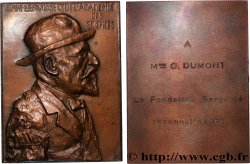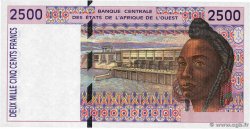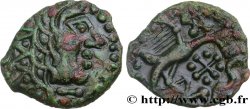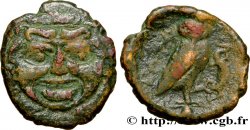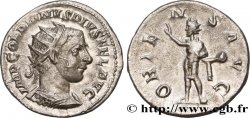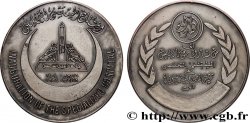fjt_1035197 - MÉDECINE - SOCIÉTÉS MÉDICALES Statue d’André VÉSALE 1847
50.00 €
Quantità
Aggiungi al carrello

Tipo : Statue d’André VÉSALE
Data: 1847
Nome della officina / città: Bruxelles
Metallo : rame
Diametro : 30 mm
Asse di coniazione : 12 h.
Peso : 12,41 g.
Orlo : lisse
Marchio : sans poinçon
Grado di rarità : R1
Commenti sullo stato di conservazione:
Patine hétérogène avec des traces d’usure, quelques coups et rayures. Présence de taches d’oxydation. Quelques concrétions, coups et rayures sur la tranche. Traces d’un ancien nettoyage
Diritto
Titolatura diritto : STATUE D’ANDRÉ VÉSALE INAUGURÉE LE 31 DEC. 1847.
Descrittivo diritto : La statue signée L. WIENER et D’AP. GEEL.
Rovescio
Titolatura rovescio : JETON DE PRÉSENCE - S. P. Q. B. (SENATUS POPULUSQUE BRUXELLIENSIS).
Descrittivo rovescio : Blason de Bruxelles.
Traduzione rovescio : Le Sénat et le Peuple de Bruxelles.
Commento
André Vésale forme francisée de son nom latin Andreas Vesalius (il s'appelait de son nom d'origine André Wytinck dit de Wesel, ville rhénane dont son grand-père était originaire) naît le 31 décembre 1514, à Bruxelles (Brabant) et meurt en 1564 dans l'île de Zante (Zakynthos) en Grèce.
André Vésale a été un anatomiste, médecin brabançon, mais surtout, comme tous les humanistes de son temps, européen quand on examine l'ensemble de son parcours, considéré par de nombreux historiens des sciences comme le plus grand anatomiste de la Renaissance, voire le plus grand de l’histoire de la médecine. Ses travaux, outre qu’ils ont fait entrer l’anatomie dans la modernité, mettront fin aux dogmes du galénisme qui bloquaient l’évolution scientifique depuis plus de mille ans aussi bien en Europe que dans le monde islamique. Il est l’auteur d'un des livres les plus novateurs sur l’anatomie humaine, De humani corporis fabrica (Sur le fonctionnement du corps humain). Il est aussi un grand humaniste de son époque.
la suite de sa biographie à http://fr.wikipedia.org/wiki/Andr%C3%A9_V%C3%A9sale.
André Vésale, the Frenchified form of his Latin name Andreas Vesalius (his original name was André Wytinck, known as de Wesel, a town in the Rhineland where his grandfather came from), was born on December 31, 1514, in Brussels (Brabant) and died in 1564 on the island of Zante (Zakynthos) in Greece. André Vesalius was an anatomist, a Brabant doctor, but above all, like all the humanists of his time, European when we examine his entire career, considered by many historians of science as the greatest anatomist of the Renaissance, or even the greatest in the history of medicine. His work, in addition to bringing anatomy into modernity, put an end to the dogmas of Galenism which had blocked scientific development for more than a thousand years in both Europe and the Islamic world. He is the author of one of the most innovative books on human anatomy, De humani corporis fabrica (On the Functioning of the Human Body). He is also a great humanist of his time. The rest of his biography is at http://fr.wikipedia.org/wiki/Andr%C3%A9_V%C3%A9sale
André Vésale a été un anatomiste, médecin brabançon, mais surtout, comme tous les humanistes de son temps, européen quand on examine l'ensemble de son parcours, considéré par de nombreux historiens des sciences comme le plus grand anatomiste de la Renaissance, voire le plus grand de l’histoire de la médecine. Ses travaux, outre qu’ils ont fait entrer l’anatomie dans la modernité, mettront fin aux dogmes du galénisme qui bloquaient l’évolution scientifique depuis plus de mille ans aussi bien en Europe que dans le monde islamique. Il est l’auteur d'un des livres les plus novateurs sur l’anatomie humaine, De humani corporis fabrica (Sur le fonctionnement du corps humain). Il est aussi un grand humaniste de son époque.
la suite de sa biographie à http://fr.wikipedia.org/wiki/Andr%C3%A9_V%C3%A9sale.
André Vésale, the Frenchified form of his Latin name Andreas Vesalius (his original name was André Wytinck, known as de Wesel, a town in the Rhineland where his grandfather came from), was born on December 31, 1514, in Brussels (Brabant) and died in 1564 on the island of Zante (Zakynthos) in Greece. André Vesalius was an anatomist, a Brabant doctor, but above all, like all the humanists of his time, European when we examine his entire career, considered by many historians of science as the greatest anatomist of the Renaissance, or even the greatest in the history of medicine. His work, in addition to bringing anatomy into modernity, put an end to the dogmas of Galenism which had blocked scientific development for more than a thousand years in both Europe and the Islamic world. He is the author of one of the most innovative books on human anatomy, De humani corporis fabrica (On the Functioning of the Human Body). He is also a great humanist of his time. The rest of his biography is at http://fr.wikipedia.org/wiki/Andr%C3%A9_V%C3%A9sale








 Segnalare un errore
Segnalare un errore Stampate la pagina
Stampate la pagina Condividi mia selezione
Condividi mia selezione Fai una domanda
Fai una domanda Consegnare / vendere
Consegnare / vendere
 Descrittivo
Descrittivo
